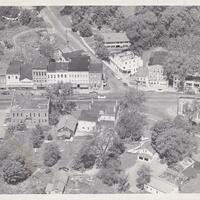Waterville Historical Society

Waterville, New York 13480
Phone: 315-202-4102
About
Waterville Historical Society was chartered by the New York Board of Regents in 1966.
Its mission is to collect materials documenting the history of the Village of Waterville and Town of Sangerfield, and preserve them for the community and future generations. In 2010 it acquired a historic building at 220 East Main Street that was previously a private home, an organ factory, a girls’ seminary, the Waterville YMCA, and the Waterville Public Library, and now serves as a history museum and archive. It is part of the Triangle Historic District listed on the National Register of Historic Places in 1978, an area bordered by Main Street, White Street and Barton Avenue.
Sangerfield was settled by New Englanders on Oneida territory in the 1790s in the land development following the Revolution. The town is named for Jedediah Sanger, founder of New Hartford, who brokered the original land sales. Settlers utilized the waterpower of Oriskany Creek to establish mills and distilleries. First known as The Huddle, the Village of Waterville was named in 1808 and incorporated in 1871. Hop growing was introduced in the 1820s and reached its peak by 1885. With the arrival of the railroad in 1867, Waterville became a shipping hub for the region's hops, and it was the site of a national hop exchange and the Waterville Hop Extract Works. Business and industry boomed, and the prosperity of the era is reflected in the substantial homes, churches, commercial and public buildings of the Triangle Historic District. Changes in the region’s economy in the 20th and 21st centuries have impacted the town and village, yet they retain much of their character and traditions.
Waterville Historical Society is a member of the Central New York Library Resources Council.
Collections

This collection of photographs documents the development of Waterville's Main Street, the commercial heart of the village, from the mid-19th century to the present.